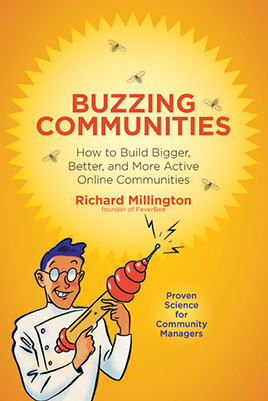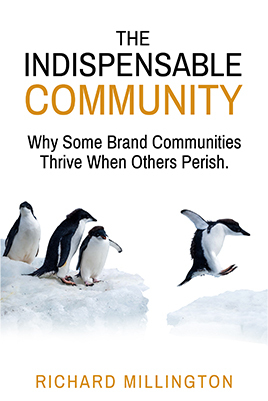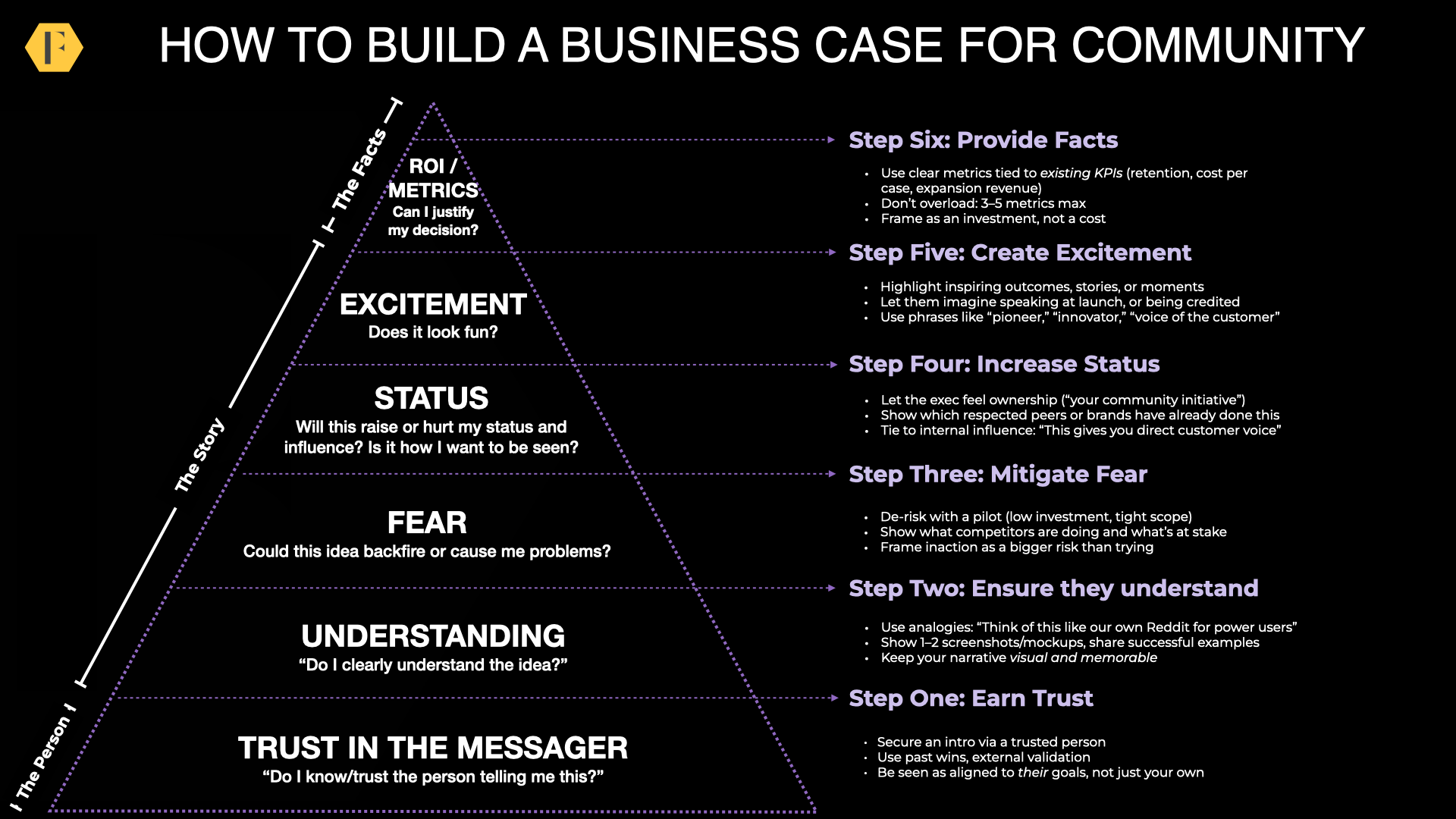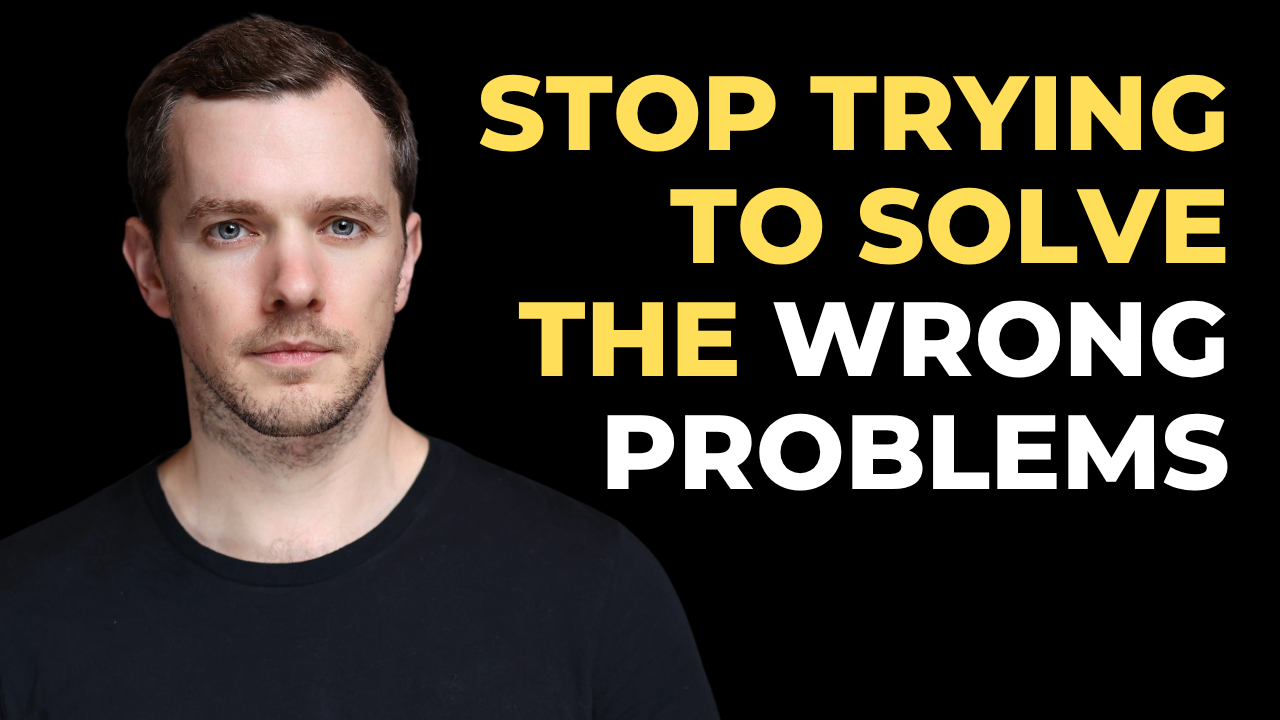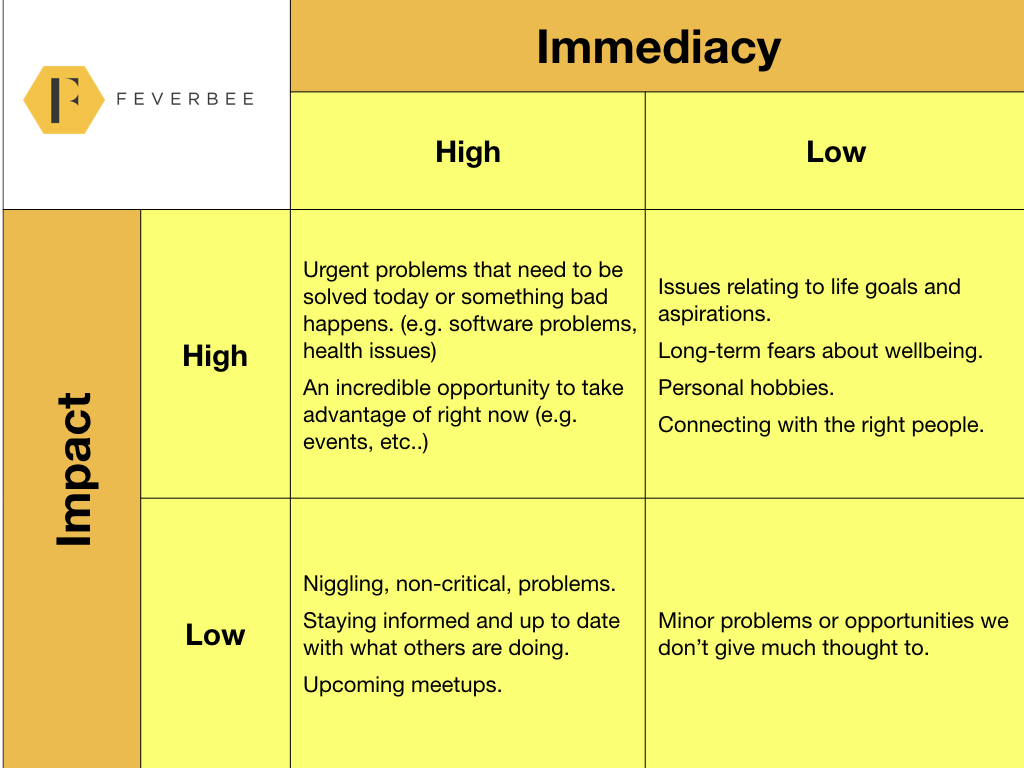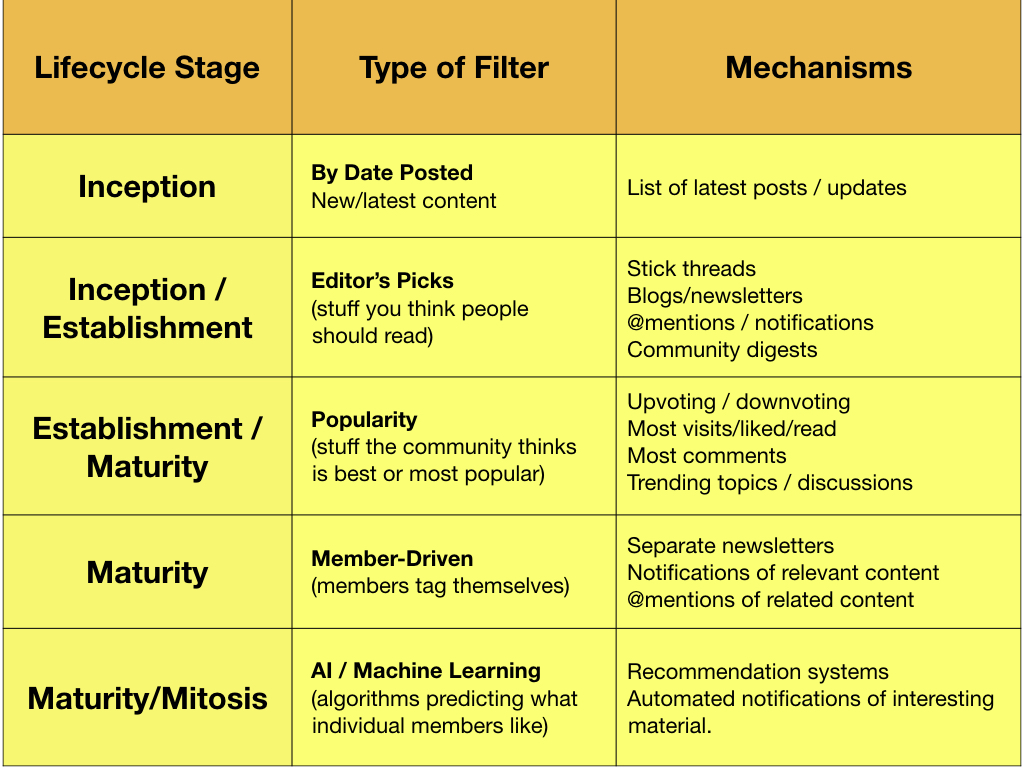Don’t believe the “our members are too busy to participate” myth.
Time is about priority and priority is about relevancy. If your community is helping your members solve their toughest problems right now, they will always find the time to visit.
The problem is most communities don’t get their signal to noise balance right. They aren’t helping enough members achieve the goals they have right now. They’re not making their community relevant enough to their members.
The Signal Is About Relevance
If you made a list of your priorities today, you wouldn’t name long-term ambitions nor a strong desire to ‘connect’, ‘share’, or ‘join the conversation’.
The biggest priorities for us are the things that have the most important outcome to us (impact) right now (immediacy).
We can see examples of these in the table below:
The key to overcoming the signal to noise problem is to ensure as many of your visitors as possible see community activities related to the top left box.
But this is more difficult than it might first seem and changes at each stage of the community lifecycle. This means you need to ensure you have the right mechanisms for your stage of the community lifecycle.
In this post, we’re going to explain what these mechanisms are and how to use them.
How To Keep The Signal Strong In Increasingly Noisier Communities
Separate signal from noise requires a filter. There are five broad types of filter which you can use across the four stages of the community lifecycle. These are chronological, editor’s picks, member-tagging, popularity, and artificial intelligence.
As you can see above, as you grow you should gradually invest more time and money to build bigger and better filters.
Key point: Don’t stick with the filter you have as your community grows. You also need to develop better ones. Members will usually push back at first, but you need to be sure you keep pushing for the filter you need.
Inception Stage – Chronological Updates
If you get a good, focused, community concept early on (and you’re clear about the type of community you’re trying to build), your signal to noise ratio should be strong.
Early-stage communities should be all about signal. Almost 100% of updates should be relevant to what brought most people to the community. If they’re not, your concept is too broad (p.s. this is why many communities don’t take off).
The main filter here is chronological. When everything is relevant, members just need to know what’s new compared with what they have seen already. This is a list of posts by date posted/updated.
Even the largest sites, like Facebook, began with a simple system of showing all updates chronologically.
Your main task here is to keep the filter clean by weeding out the few posts that are outside the community’s focus.
Inception / Establishment Stage – Editor’s Picks
As your community grows to around the 100+ active participants region and you near critical mass, it becomes impossible to keep up with every update posted. This is where you need to make sure members aren’t missing out on the best stuff.
This is where you use editor’s picks.
This means you use sticky threads, blog posts, newsletters, and community digests to highlight the content you think most people in the community should see.
You should be helping members see the most popular/useful items of content in your community regardless of when they were posted.
Even some of the largest platforms, e.g. Slideshare, still use editor’s picks to highlight the best contributions others should read.
There are two key challenges here.
- Ensuring the quality of any ‘selection’ remains high. Some people fall victim to doing daily or weekly picks regardless of quality. Wait until you have enough quality contributions or you dilute the power of a pick.
- Reading enough contributions and identifying the best content. This becomes increasingly time-consuming.
Establishment/Maturity – Popularity Filters
As you reach the maturity phase of the community lifecycle, you will have too much content to process everything yourself. You’re also not the best judge of what’s the best content in the community compared with thousands of members.
This is often the stage where it makes sense to move platforms.
At this level, you want to use popularity filters to ensure the best content can rise to the top. This usually uses one of three metrics.
- Most visited. This is the number of users who have visited within a recent period of time. This usually highlights the most useful or entertaining piece of content.
- Most commented upon. This is great for most engaging topics – often the most controversial.
- Highest rated. This uses the number of upvotes (sometimes weighted by the ranking of the user) to show the content members like the best. This is a really important score.
All three have their place. Highest rated and most visited is best for lurkers, most commented upon is best for regular members.
Ideally you show the member the most popular content within the past week, yet also show the most popular within the past hour (trending topic), week (popular topic), month (top content), and ‘all time’ (best content).
However, be aware that you will probably need to manually remove some topics or set stronger filters. Sometimes old content which most members have seen is indefinitely the highest rated or most popular material every week.
Your goal is to allow members to quickly find the best content without having to browse through hundreds of posts. This only works when you already have a lot of activity.
Most major platforms enable some form of these already without much difficulty.
Your main work here is testing and managing different filters to get the best results.
Maturity Stage – Developing Unique Segments
As you grow past establishment stage, you begin to attract a more diverse group of members whose needs begin to diverge. Some people make the mistake on doubling down what’s worked in the past and focus on what they know best.
This limits the potential popularity of the community.
What’s most popular will increasingly be irrelevant to minority groups within the topic. The better solution here is to start categorizing and tagging members into distinct groups. Then you serve them the content that is most relevant to them.
The first part of this is to figure out a good system of tagging people (tagging works better than categorization here, people might be interested in more than one topic). You have four options for this.
- Create new groups/categories and let people join them. This is the simplest option, but most members won’t join any groups and you might be left with vacant areas of the site.
- Manually tag people by topics they seem interested in. This works better in smaller communities, but is a great way to test potential tags and ideas.
- Create a profile question and add people to the relevant group as a result. This works well for new members, but not so well for existing members.
- Run a SQL query to see who has visited or participated in which topics and then assign them tags as a result. This works very well, but requires some technology support. You can do this once or on a monthly basis. Begin with a few key topics at a time. It’s also possible your top members will participate in almost every discussion.
It’s usually best to focus on each unique segment at a time and ensure there is enough demand for the segment to make it worthwhile. You also need to check you have the resources to cater to them.
Once you have your segments, you can start sending them newsletters, @mentioning them by group to important discussions, or notifying them of new, popular, content in the community. This can be done manually or, ideally, automated. You shouldn’t attempt this stage until you have more resources to make it work.
Maturity/Mitosis – AI/Machine Learning Recommendation Systems
At the most advanced level, you should begin to see AI and recommendation systems. These essentially assign a score to each past member activity and use a weighted score to predict other relevant discussions members might be interested in. This is known as an algorithm.
These algorithms run each content through a relevancy filter of their own based upon popularity, existing metrics, content of the post, before using your past activities to determine if it will show it to you.
They’re not perfect, but they do improve with every click. Some of the best, like Amazon, Facebook, and Quora, perform remarkably well when showing members content they need to see.
At the simpler level, any post you read will also highlight other relevant posts. This is included in many of the most popular community platforms today. At the more advanced level you need to design more complex systems to handle who wants to see which information (and from whom).
Summary
Don’t rush to move up to the next filter until you have the level of activity to make it worthwhile, but don’t be too late to move neither.
You need to carefully balance your limited resources with the opportunity to develop increasingly advanced filters as your community grows. If you get this right, you should never have the ‘too busy to participate’ problem again.
p.s. Final chance to sign up for your Strategic Community Management and Psychology of Community courses
